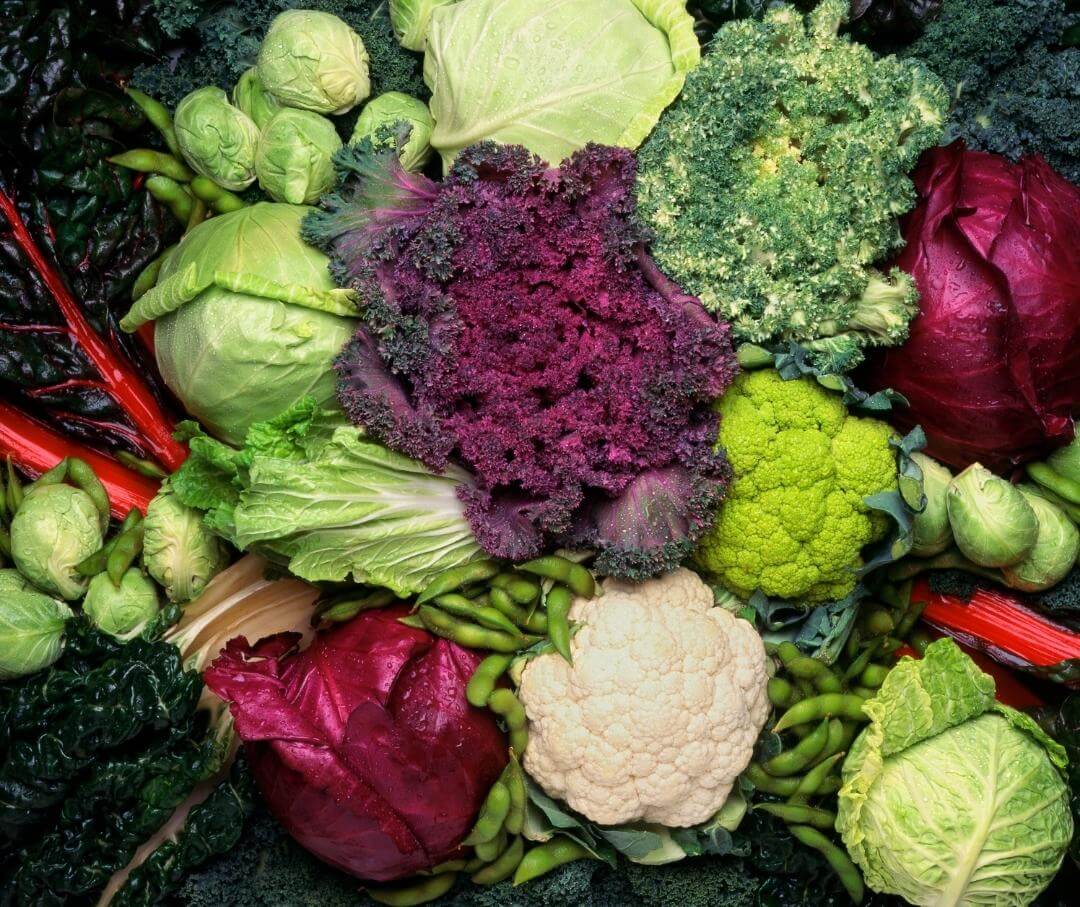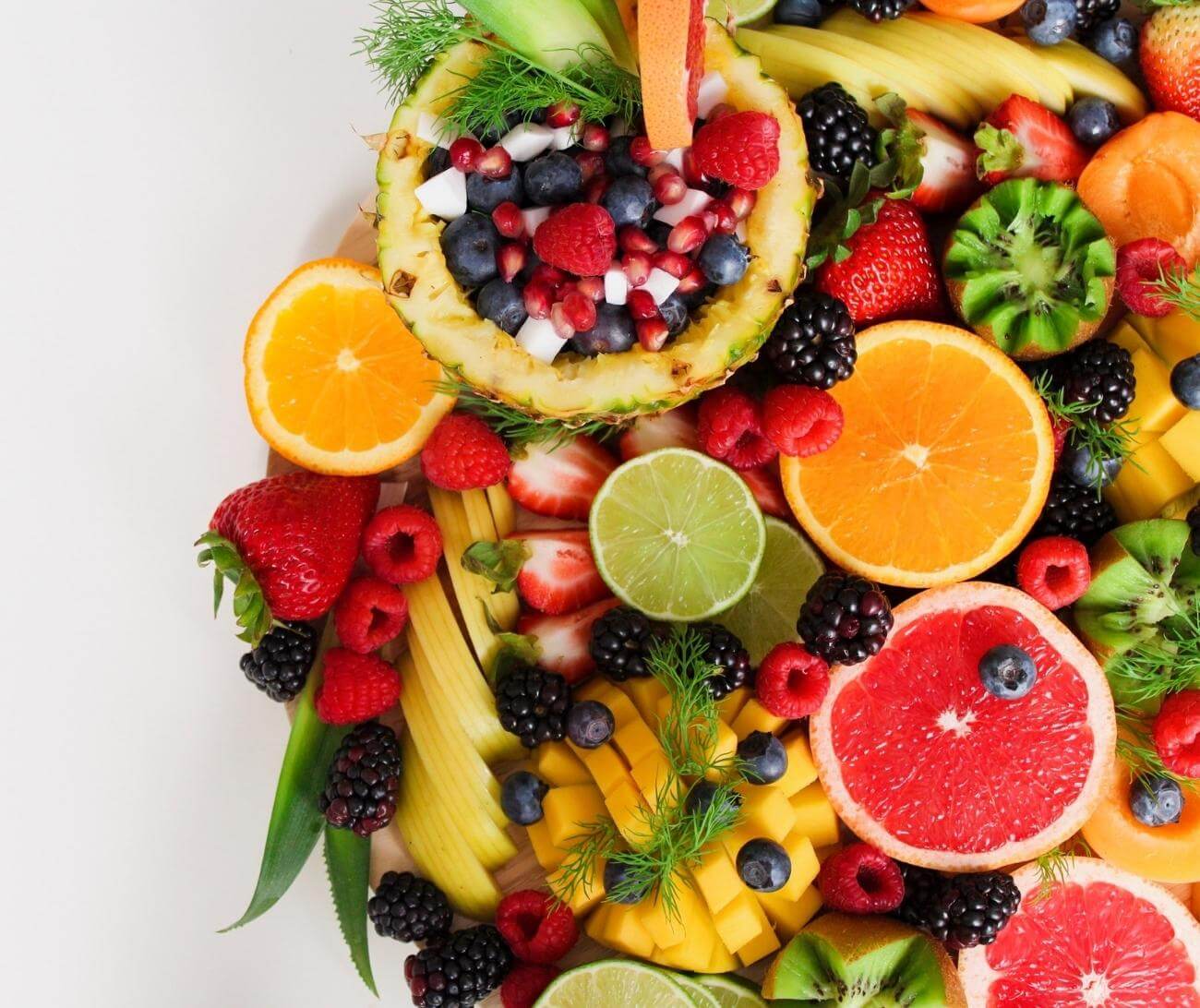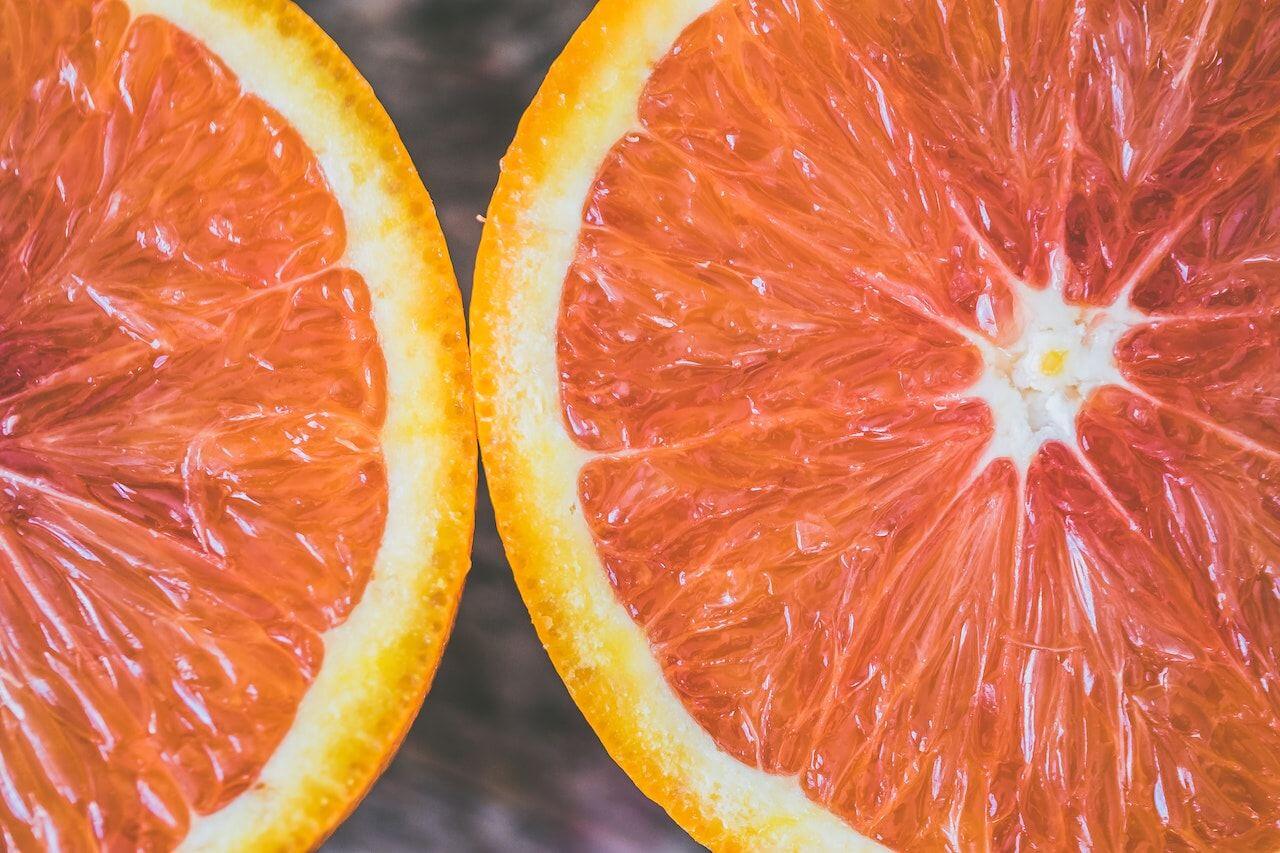Metabolic health refers to energy metabolism and how well your body can stabilize blood sugar, maintain balanced cholesterol levels and blood pressure, and a healthy waist circumference.1
No proven foods will improve your metabolism overnight, but certain fruits can support your metabolic health goals and keep you at a healthy body weight.
{{mid-cta}}
Does Fruit Really Boost Metabolism?
No single choice is the best food to increase metabolism, but fruit can keep your metabolism healthy as part of a balanced diet. Fruits are high in healthy carbs, antioxidants, vitamins, and minerals that the cells need to metabolize the food you eat to create energy.
Fruit is also high in fiber, a nutrient that increases satiety (a feeling of fullness) between meals to reduce cravings, and has been linked to overall health benefits such as:2
- Regular bowel movements and a healthy colon
- Long-term weight management
- Reduced risk of heart disease
- Reduced risk of diabetes and better glucose control
- Reduced risk of metabolic syndrome
- Protecting the body from lung cancer and colon cancer
<p class="pro-tip"><strong>Learn More About: </strong> <a href=/blog/low-gi-fruits>low-GI fruits</a>.</p>
Fruits That Support Metabolic Health

1. Strawberries
Strawberries are a popular summer fruit and are low in sugar. The bright red berries are rich in fiber, and vitamin C. Vitamin C supports metabolic function by assisting in protein metabolism and immune function and serving as a precursor for neurotransmitters.3
Many people enjoy fresh strawberries in their breakfast oatmeal or on top of unflavored yogurt. Strawberries have a low glycemic index score and should have minimal impact on your blood sugar, which is an added bonus.
2. Blueberries
Blueberries are high in fiber, potassium, and several antioxidants.4 As mentioned above, fiber is an essential nutrient linked to health benefits like lower blood sugar and increased satiety after eating.
You can add blueberries to any meals or snacks that would normally feature a strawberry. You can also add them to salads in the summer for a fun twist on a vegetable-dominant dish or sprinkle them on peanut butter toast instead of sweetened jam.
3. Pears
Pears are high in fiber and come in many different varieties. Eating two pears per day successfully lowered blood pressure points in middle-aged and older adults and should be rotated into your daily intake of fresh fruit.5
Fresh pears have more significant research to support the health claims compared to cooked pears. Include fresh pears in salads, yogurts, or on a charcuterie-style plate at home.
4. Goji Berries
Native to Asia, goji berries are antioxidant-rich fruits with a slightly sour taste. Goji berry juice has been linked to weight loss and improved metabolic rate after only two weeks.6
Most goji berries in the store are dehydrated and have a texture similar to raisins. You can add goji berries to salads or low-sugar cereal for a tart surprise or add goji berry juice to smoothies.
5. Avocado
Avocados are rich in magnesium and unsaturated fats, including oleic acid. Oleic acid has been linked to lowering inflammation in the body and promoting energy expenditure.7 Having plenty of energy to burn is an indicator your metabolism is thriving.
Finding a ripe avocado can take a bit of patience and luck. The fruit should be slightly soft but not mushy. Avoid eating rock-hard avocados. Avocados can be added to sandwiches and wraps or tossed in a smoothie for a creamy texture. They even make a great topping for spicy soups.
6. Apricots
Apricots are similar to peaches but smaller and less sweet. Apricots are rich in vitamin A and beta-carotene, which helps support eye and vision health. They are also rich in vitamin C, an essential vitamin for metabolic health.3
Apricots can also boost your daily calcium intake as they contain 13 mg of calcium per 100 grams- not as much as dairy, but every little bit adds up.8 Calcium is an essential nutrient for bone health and plays a role in the metabolism of most cells in the body.9
Uncooked apricots are mild in taste. If you bake them or cook them on the grill, their flavor is enhanced. Sprinkle apricot slices with a light dusting of cinnamon for an easy, healthy dessert.
7. Oranges
Like apricots and strawberries, oranges (and other citrus fruits like grapefruit) are a powerhouse of vitamin C, which is actively involved in protein synthesis and immune function. A strong immune system is an excellent indicator of metabolic health. However, vitamin C cannot be synthesized in the body, which is why getting it through your diet every day is essential.
Oranges also contain calcium and essential dietary fiber, and their thick peel makes them tougher, so they can withstand a bit of transport in your lunch bag.
8. Apples
All apple varieties are rich in fiber, b-vitamins, and phytonutrients. Phytonutrients are organic compounds that have a similar function as antioxidants. They protect your vital cells against damage from harmful free radicals, which, if left unmanaged, can worsen your metabolic health and increase your risk of disease.10
Apples are versatile and can be enjoyed raw or cooked. For an easy snack, you can dip apple slices into natural peanut butter, which is rich in healthy fats and protein. Both of those macronutrients help slow down the digestion of the apple and slow the effect on your blood sugar levels.
9. Plums
Plums are rich in vitamin C and polyphenols, a potent antioxidant commonly found in darkly colored fruits and vegetables. Polyphenols are currently being researched for their potential benefits in regulating metabolism, weight, and chronic diseases.11
Ripe plums are available throughout the summer, sometimes into early September, depending on the climate. You can add plums to cereals and yogurts or pair them with a savory meal. Grilled chicken thighs with plums are juicy, tangy, and delicious.
10. Cantaloupe
Cantaloupe is rich in beta-carotene and fiber and has a high water content. All fluids in fruits and foods contribute to your hydration status. Being hydrated may help improve metabolic function and support a healthy weight.
Some research suggests that being dehydrated can cause higher levels of hormones that interfere with healthy metabolism, so choosing fruits like cantaloupe can help keep you hydrated to support your metabolic health.12
11. Bananas
Bananas can support metabolism as a post-workout snack, offering carbohydrates to replenish stores used after exercise. They are also high in potassium and vitamins like vitamin B6.
Potassium plays a crucial role in muscle recovery and regulating fluid balance, helping to prevent cramping and repairing muscles that may have been stressed during exercise. Interestingly, one study found that consuming bananas worked as well as sugar-containing beverages to aid in recovery after endurance cycling.13
Bananas are easy as a grab-and-go snack, but you can add a dollop of nut butter for extra protein and healthy fat. Frozen bananas also make any smoothie creamier and more delicious.
12. Watermelon
Similar to cantaloupe, watermelon contains a lot of water, so much so that it’s touted as a weight-loss fruit. While a diet consisting of nothing but watermelon won’t help your metabolism, this fruit is high in minerals essential to keeping it running smoothly.
Watermelon contains L-citrulline, an amino acid precursor to L-arginine. L-arginine is an amino acid deeply involved in protein synthesis and may even support healthy blood sugar levels. It also contains lycopene, an antioxidant that fights back against oxidative stress.14
13. Blood Oranges
Blood oranges are an excellent choice for supporting metabolism, thanks to their high vitamin C content. Vitamin C is crucial for the immune system and helps with fat oxidation, breaking down fatty acids for energy. Some research found that people with metabolic syndrome have lower vitamin C levels, suggesting a link between vitamin C deficiency and reduced metabolism.15
Adding blood oranges to your diet can be a smart move for better metabolic efficiency and overall well-being. Plus, the unique anthocyanins in blood oranges, giving them that reddish hue, offer health perks like improved heart health and reduced inflammation.16
Fruit Juice vs. Whole Fruits: Which Is Better?

Fruit juice is much higher in sugar than whole fruits, and drinking too much juice can cause your blood sugars to spike. A glass of juice contains the sugars of several fruits without the fiber, which is rapidly absorbed into your bloodstream.
The same philosophy applies to prepackaged fruit smoothies or cold-press juices. Even though all the ingredients can pack a nutrient-dense punch, the volume of fruits required to make the drink may surpass the recommended daily servings.
You can opt to make your own smoothie at home with only one or two low-GI fruits and high-protein ingredients, including nut butter and unflavored Greek yogurt. You can also simply add some berries to your breakfast and eat an apple with your lunch.
Final Takeaways
Including various fruits in your healthy diet can ensure you get all the nutrients you need for a high-functioning metabolism. They can help restore metabolic health as part of a healthy lifestyle.
If you usually stick to the same fruit each week, challenge yourself to include one new item from this list in your weekly meals. The best fruits for your metabolism are the ones you enjoy because you’ll eat them regularly!
Before starting a new diet or exercise plan, it's a good idea to chat with your healthcare practitioner or registered dietitian nutritionist (RDN) to ensure it fits your health needs and goals. Physical activity and eating well are key to a healthy metabolism and overall well-being.
<p class="pro-tip"><strong>Read About: </strong> <a href=/blog/signos-metabolic-experiments>using Signos for your own metabolic experiments</a>.</p>
- Item 1
- Item 2
- item 3
Topics discussed in this article:
References
- Lotta, L. A., Abbasi, A., Sharp, S. J., Sahlqvist, A. S., Waterworth, D., Brosnan, J. M., Scott, R. A., Langenberg, C., & Wareham, N. J. (2015). Definitions of Metabolic Health and Risk of Future Type 2 Diabetes in BMI Categories: A Systematic Review and Network Meta-analysis. Diabetes care, 38(11), 2177–2187. https://doi.org/10.2337/dc15-1218
- Dreher M. L. (2018). Whole Fruits and Fruit Fiber Emerging Health Effects. Nutrients, 10(12), 1833. https://doi.org/10.3390/nu10121833
- National Institute of Health. (2021, March 26). Office of Dietary Supplements - Vitamin C. National Institute of Health Office of Dietary Supplements. Retrieved July 2022, from https://ods.od.nih.gov/factsheets/VitaminC-HealthProfessional
- Wolfe, K. L., Kang, X., He, X., Dong, M., Zhang, Q., & Liu, R. H. (2008). Cellular antioxidant activity of common fruits. Journal of agricultural and food chemistry, 56(18), 8418–8426. https://doi.org/10.1021/jf801381y
- Navaei, N., Pourafshar, S., Akhavan, N. S., Litwin, N. S., Foley, E. M., George, K. S., Hartley, S. C., Elam, M. L., Rao, S., Arjmandi, B. H., & Johnson, S. A. (2019). Influence of daily fresh pear consumption on biomarkers of cardiometabolic health in middle-aged/older adults with metabolic syndrome: a randomized controlled trial. Food & Function, 10(2), 1062–1072. https://doi.org/10.1039/c8fo01890a
- Amagase, H., & Nance, D. M. (2011). Lycium barbarum Increases Caloric Expenditure and Decreases Waist Circumference in Healthy Overweight Men and Women: Pilot Study. Journal of the American College of Nutrition, 30(5), 304–309. https://doi.org/10.1080/07315724.2011.10719973
- Tutunchi, H., Ostadrahimi, A., & Saghafi-Asl, M. (2020). The Effects of Diets Enriched in Monounsaturated Oleic Acid on the Management and Prevention of Obesity: a Systematic Review of Human Intervention Studies. Advances in nutrition (Bethesda, Md.), 11(4), 864–877. https://doi.org/10.1093/advances/nmaa013
- Agricultural Research Service. (n.d.). FoodData Central. Retrieved from https://fdc.nal.usda.gov/fdc-app.html#/food-details/171697/nutrients
- Institute of Medicine (US) Committee to Review Dietary Reference Intakes for Vitamin D and Calcium, Ross, A. C., Taylor, C. L., Yaktine, A. L., & Del Valle, H. B. (Eds.). (2011). Dietary Reference Intakes for Calcium and Vitamin D. National Academies Press (US).
- Rana, S., & Bhushan, S. (2016). Apple phenolics as nutraceuticals: assessment, analysis and application. Journal of food science and technology, 53(4), 1727–1738. https://doi.org/10.1007/s13197-015-2093-8
- Cory, H., Passarelli, S., Szeto, J., Tamez, M., & Mattei, J. (2018). The Role of Polyphenols in Human Health and Food Systems: A Mini-Review. Frontiers in nutrition, 5, 87. https://doi.org/10.3389/fnut.2018.00087
- Thornton S. N. (2016). Increased Hydration Can Be Associated with Weight Loss. Frontiers in nutrition, 3, 18. https://doi.org/10.3389/fnut.2016.00018
- Nieman, D. C., Gillitt, N. D., Sha, W., Esposito, D., & Ramamoorthy, S. (2018). Metabolic recovery from heavy exertion following banana compared to sugar beverage or water only ingestion: A randomized, crossover trial. PloS one, 13(3), e0194843. https://doi.org/10.1371/journal.pone.0194843
- Manivannan, A., Lee, E. S., Han, K., Lee, H. E., & Kim, D. S. (2020). Versatile Nutraceutical Potentials of Watermelon-A Modest Fruit Loaded with Pharmaceutically Valuable Phytochemicals. Molecules (Basel, Switzerland), 25(22), 5258. https://doi.org/10.3390/molecules25225258
- Wong, S. K., Chin, K. Y., & Ima-Nirwana, S. (2020). Vitamin C: A Review on its Role in the Management of Metabolic Syndrome. International journal of medical sciences, 17(11), 1625–1638. https://doi.org/10.7150/ijms.47103
- Khoo, H. E., Azlan, A., Tang, S. T., & Lim, S. M. (2017). Anthocyanidins and anthocyanins: colored pigments as food, pharmaceutical ingredients, and the potential health benefits. Food & nutrition research, 61(1), 1361779.








.jpg)























